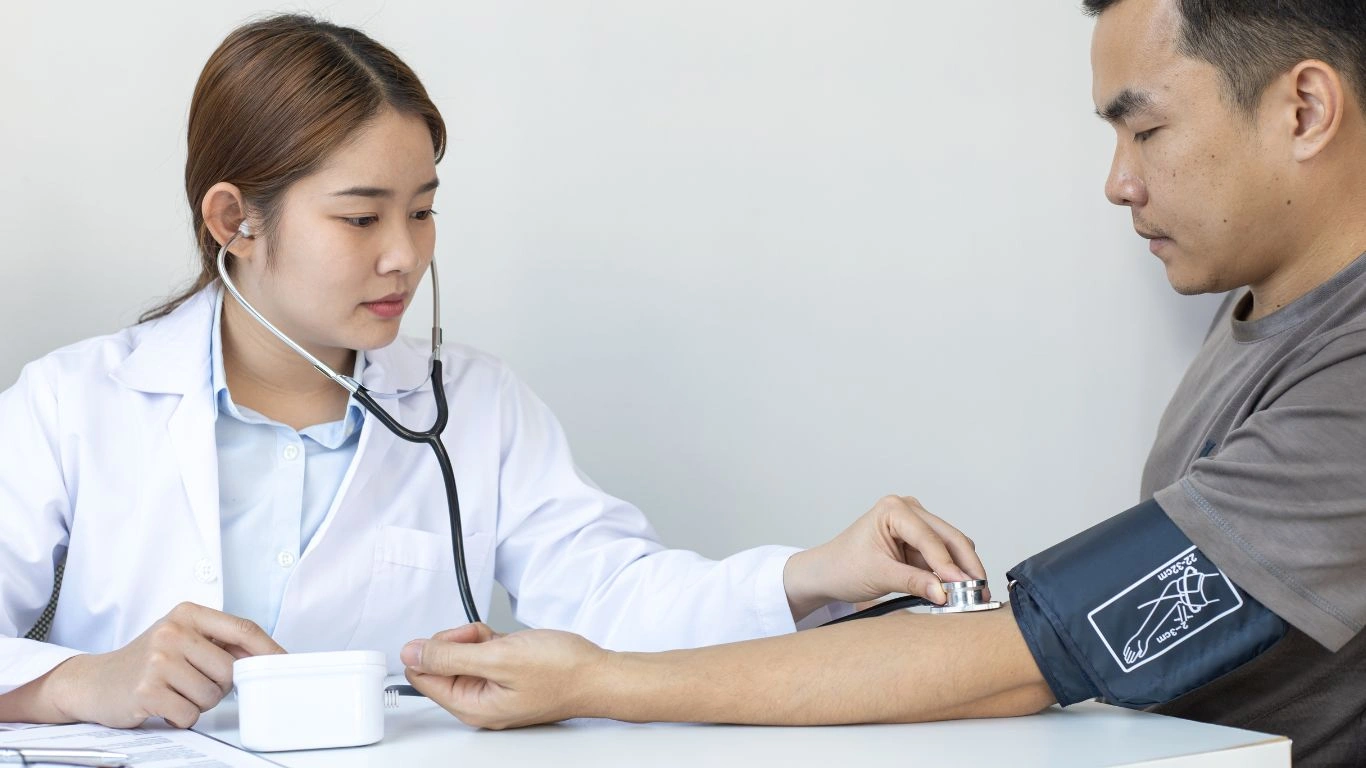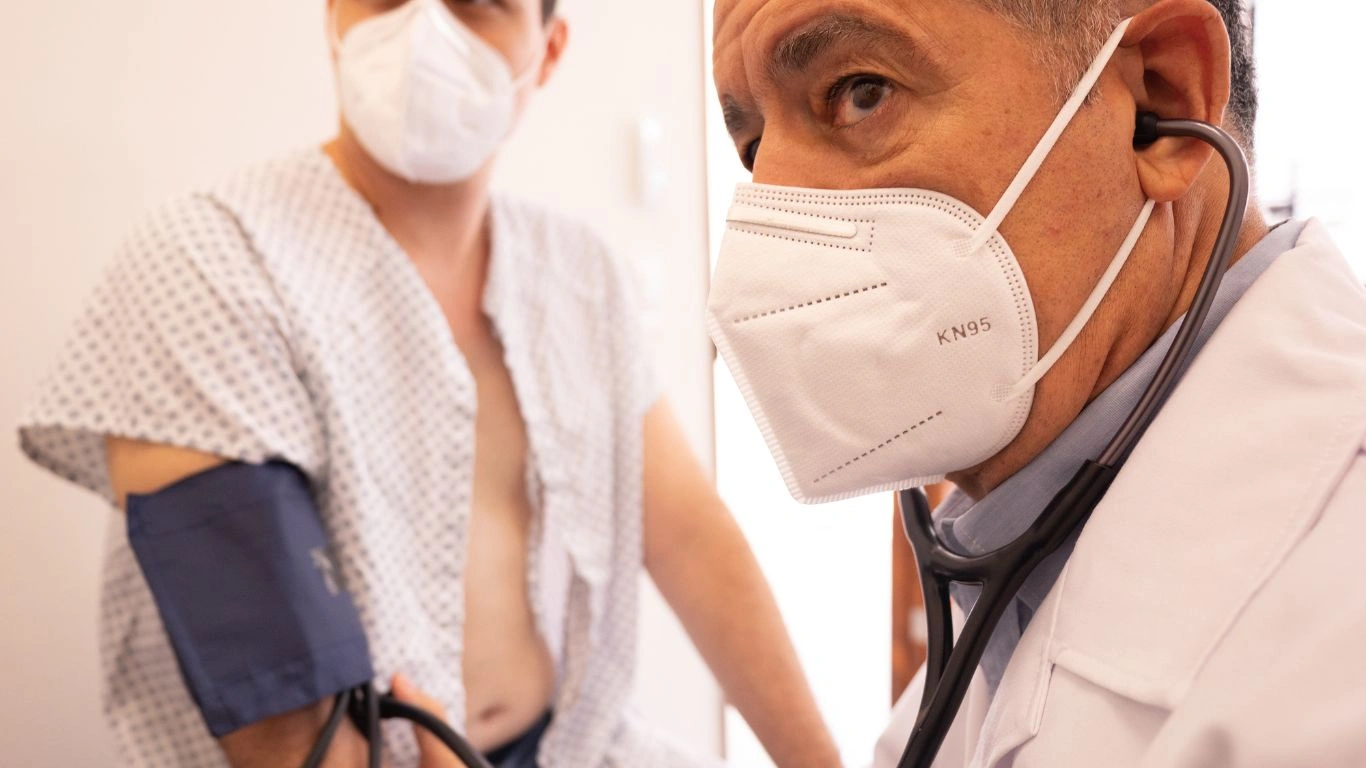Unlock the Power of Potassium for Better Hypertension Control
If you’ve ever managed a patient with persistent high blood pressure despite lifestyle changes and a long list of medications, you know how frustrating it can be—for both the patient and the provider. One of the often-overlooked yet crucial elements in managing hypertension is something many people don’t talk about enough: the role of potassium in hypertension control. From my years of working as an Internal Medicine Physician focused on hypertension management, I’ve seen firsthand how impactful this little mineral can be—not just in theory, but in real-world outcomes. Let’s dig into it together.
Understanding the Potassium-Blood Pressure Connection

First things first—why does potassium even matter when we’re talking about blood pressure? Most of us think of sodium as the villain in hypertension, and rightly so. But potassium is like sodium’s quiet, peace-making cousin. It helps offset the effects of sodium by encouraging the kidneys to excrete excess sodium through urine. That balance can be a game-changer.
To put it simply: more potassium means less sodium retention, which often translates to lower blood pressure. It’s not magic—it’s just smart physiology. I’ve had several patients who, after optimizing their potassium intake, saw noticeable improvements in their numbers without needing to escalate their meds. That’s always a win in my book.
What the Science Says
Clinical studies back up what many of us see in practice. The DASH (Dietary Approaches to Stop Hypertension) diet, which emphasizes potassium-rich foods, has long been proven effective in lowering blood pressure. The World Health Organization even recommends increasing potassium intake as a first-line dietary intervention for managing hypertension. According to the WHO, adults should consume at least 3,510 mg of potassium daily.
But here’s the kicker—most Americans fall short of that. Way short. On average, people get only around 2,500 mg per day, which means they’re missing out on one of the simplest, most natural tools available to lower blood pressure.
Signs You Might Be Potassium Deficient

Now, potassium deficiency doesn’t always wave a red flag. But it can show up in subtle ways—especially in patients who are on certain diuretics or blood pressure meds like thiazides or loop diuretics. I usually look out for these signs:
- Muscle weakness or cramping
- Fatigue or abnormal heart rhythms
- Constipation or general sluggishness
When I suspect low potassium, I always pair symptoms with labs. Checking serum potassium levels can give a snapshot, but remember: it’s the intracellular potassium that really matters, and serum levels don’t always reflect that perfectly.
Potassium-Rich Foods to Add to Your Plate

If you’re looking to boost potassium naturally (and most people should), the good news is: it’s not that hard. Here are some of my go-to recommendations for patients:
- Bananas – Classic, reliable, and portable. Each one has around 420 mg of potassium.
- Sweet potatoes – A medium-sized one gives you over 500 mg. Plus, fiber and beta-carotene. Win-win.
- Spinach – Cooked spinach can pack over 800 mg in a cup. Great in soups and sautés.
- Avocados – Delicious and nutrient-dense. Half an avocado has about 480 mg of potassium.
- White beans – A real MVP in the potassium world. A cup can give you over 1,000 mg!
I often encourage patients to swap out overly processed snacks for these natural options. Not only do they help with blood pressure, but they also come with a host of other health benefits—fiber, antioxidants, vitamins—you name it.
But What About Potassium Supplements?
Ah, the supplement question. It comes up all the time. While potassium supplements can be helpful, especially in those with clinically low levels, I’m always cautious. They can interact with medications like ACE inhibitors, ARBs, and potassium-sparing diuretics. And let’s be real—taking too much potassium isn’t harmless. Hyperkalemia is no joke.
So my general rule? Food first, supplements second—only if needed and with close monitoring. I can’t count the number of times I’ve had to adjust meds because a patient added an over-the-counter potassium supplement without telling anyone. Always loop your provider in before starting any supplement.
How Medications Interact with Potassium Levels

Alright, let’s talk meds—because trust me, this is where things get a little dicey. If you’re managing hypertension, chances are you or your patients are on at least one medication that affects potassium levels. It’s one of those balancing acts I see daily in clinic. Some meds push potassium levels too low, others can nudge them dangerously high. And both ends of the spectrum come with their own risks.
For example, thiazide and loop diuretics (like hydrochlorothiazide or furosemide) are notorious for causing potassium loss. I always make it a point to monitor potassium levels closely in these patients—especially older adults who are more prone to electrolyte disturbances.
On the flip side, medications like ACE inhibitors (lisinopril, enalapril), ARBs (losartan, valsartan), and potassium-sparing diuretics (like spironolactone) can lead to elevated potassium levels. I had one patient who ended up in the ER with a potassium of 6.3 after starting spironolactone and deciding to load up on bananas and coconut water without telling anyone. Lesson learned—always double-check before making major dietary changes when you’re on these meds!
How I Monitor and Adjust in Practice
Here’s what works for me in real-world care: I schedule potassium checks within 1-2 weeks of starting or adjusting medications that affect potassium. If everything looks good, we monitor less frequently after that—but I never assume. I also take time to educate my patients about food-drug interactions. A few minutes of conversation can prevent a lot of trouble later.
Key takeaway? When it comes to hypertension, potassium doesn’t exist in a vacuum. It interacts with medications in complex and sometimes unpredictable ways. That’s why individualized care is so important.
Hidden Sources of Potassium: What Patients Often Miss

Now, when I ask patients about their diet, they’ll usually tell me about bananas. Bananas, bananas, bananas. And don’t get me wrong—they’re great! But there are so many hidden sources of potassium that people don’t even realize they’re consuming.
Let me give you some examples that have surprised my patients (and even a few colleagues):
- Tomato-based products – Think pasta sauces, soups, and even ketchup.
- Low-sodium salt substitutes – These often contain potassium chloride and can skyrocket potassium intake quickly.
- Protein shakes or nutritional supplements – Many brands sneak in a significant dose of potassium.
- Coconut water – Trendy and tasty, yes, but it can pack over 600 mg per cup.
- Dark leafy greens – Kale, Swiss chard, and collard greens all come with a generous potassium boost.
This matters a lot when trying to strike that “just right” level of potassium. Whether you’re trying to increase or limit potassium, knowing where it hides is half the battle. I often give patients a list of these lesser-known sources, especially if they’re already on potassium-sparing meds.
The Role of Potassium in Hypertension Control: What the Guidelines Say

Now, looping back to our focus topic—the role of potassium in hypertension control—let’s talk about what the major guidelines have to say. The American Heart Association (AHA) and the Joint National Committee (JNC) both highlight potassium as a critical dietary component in lowering blood pressure. It’s even built right into the structure of the DASH diet, which has been shown to lower systolic pressure by as much as 11 mmHg in some cases.
And we’re not just talking about numbers on a chart. I’ve seen these effects in practice. I once had a patient—a 52-year-old woman with stage 1 hypertension—who didn’t tolerate ACE inhibitors well due to cough. Instead of pushing more meds, we focused on optimizing her nutrition. With guidance, she increased her intake of potassium-rich whole foods, cut back on processed sodium-laden snacks, and walked 30 minutes a day. Her blood pressure? Down from 138/88 to 122/76 in two months. No joke.
Potassium Isn’t a Solo Act
But here’s the thing—potassium doesn’t work alone. Magnesium, calcium, and sodium all play roles in the blood pressure puzzle. And lifestyle factors like sleep, stress, and activity levels layer right on top of that. But among the minerals, potassium consistently shows up as the MVP.
Bottom line? Whether you’re managing your own blood pressure or supporting patients, potassium deserves a front-row seat in your hypertension game plan. Just make sure it’s being managed in a personalized and informed way.
Balancing Potassium and Sodium: The Key to Hypertension Control

Let’s get real—the role of potassium in hypertension control isn’t just about adding more bananas to your diet. It’s about finding the right balance between potassium and sodium. Modern diets are often loaded with sodium and lacking in potassium, a combo that spells trouble for blood pressure.
Recent research suggests that increasing dietary potassium may be more effective in lowering blood pressure than simply reducing sodium intake. A study published in the American Journal of Physiology-Renal Physiology found that higher potassium intake consistently lowered blood pressure, even when sodium intake remained high. The effect was more significant in men than in premenopausal women. Potassium helps reduce blood pressure by relaxing blood vessels and aiding kidneys in excreting sodium. Experts recommend obtaining potassium through foods like bananas, spinach, salmon, and lentils rather than supplements due to safety concerns. The daily recommended potassium intake ranges from 3,400 mg for men to 2,600 mg for women, with the American Heart Association suggesting up to 5,000 mg to manage high blood pressure. While there’s no universal potassium-to-sodium ratio, a 2:1 ratio is often cited for heart health. Personalized dietary plans and gradual changes, with the guidance of a registered dietitian, can help individuals better manage their blood pressure through improved mineral balance. [Source]
In my practice, I’ve seen patients make significant strides in blood pressure control by adjusting their potassium-to-sodium ratio. One patient, after incorporating more potassium-rich foods and reducing processed foods high in sodium, saw a notable drop in blood pressure readings within weeks.
Practical Tips for Boosting Potassium Intake

So, how can you naturally increase your potassium intake? Here are some practical tips I often share with my patients:
- Incorporate potassium-rich foods into your meals. Think bananas, sweet potatoes, spinach, avocados, and beans.
- Limit processed foods that are typically high in sodium and low in potassium.
- Use salt substitutes cautiously. Some contain potassium chloride, which can help, but always consult with a healthcare provider first.
- Stay hydrated. Adequate fluid intake supports kidney function, aiding in the balance of sodium and potassium.
Remember, it’s not just about adding potassium but also about reducing excessive sodium intake. The synergy between the two is what truly makes a difference in managing hypertension.
References
- Boosting Potassium, Not Just Cutting Sodium, May Be the Best Way to Lower Blood Pressure
- A Primer on Potassium | American Heart Association
- Potassium lowers blood pressure – Harvard Health
Disclaimer
This article is for informational purposes only and does not constitute medical advice. Always consult with a healthcare provider before making any changes to your diet or medication regimen, especially if you have underlying health conditions or are taking medications that affect potassium levels.

Dr. Gwenna Aazee is a board-certified Internal Medicine Physician with a special focus on hypertension management, chronic disease prevention, and patient education. With years of experience in both clinical practice and medical writing, she’s passionate about turning evidence-based medicine into accessible, actionable advice. Through her work at Healthusias.com, Dr. Aazee empowers readers to take charge of their health with confidence and clarity. Off the clock, she enjoys deep dives into nutrition research, long walks with her rescue pup, and simplifying medical jargon one article at a time.






